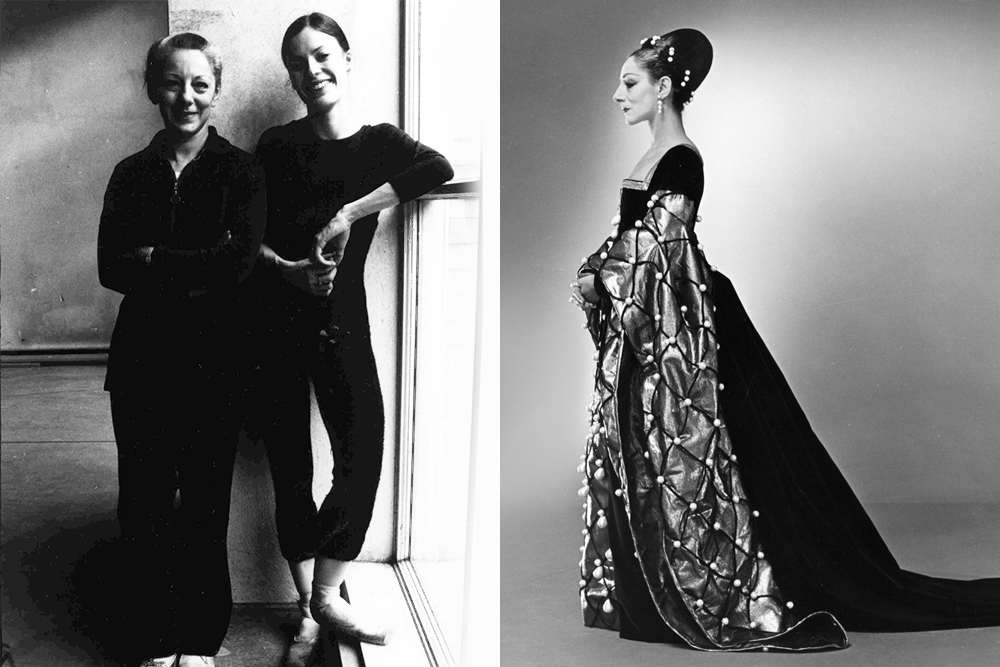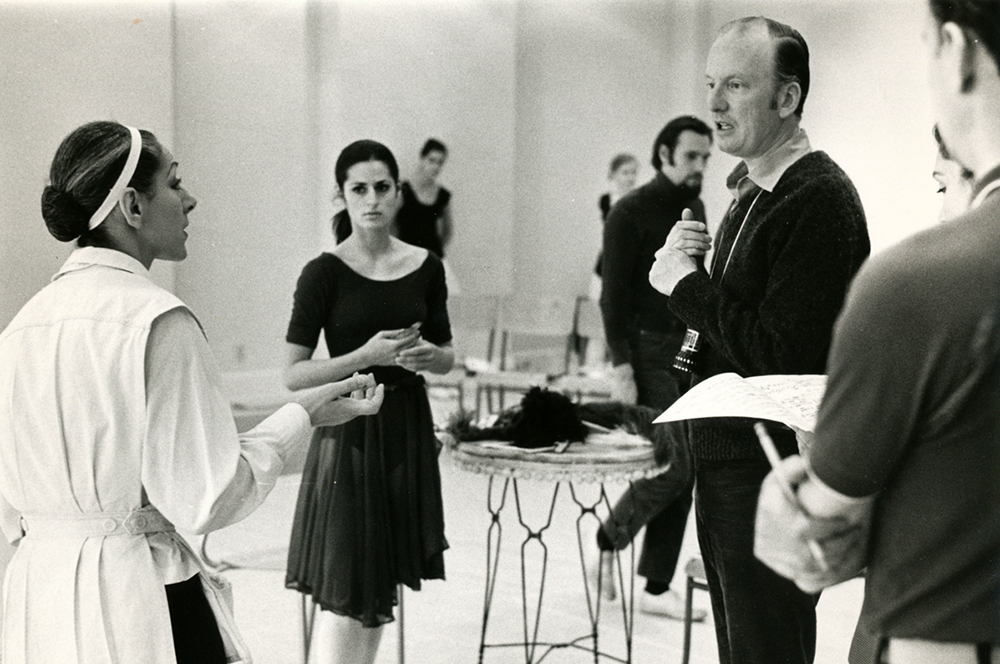Celia Franca, C.C.
Founder
Celia Franca left an extraordinary legacy of excellence and creativity at The National Ballet of Canada, the company she founded in 1951 and stewarded for 24 years as Artistic Director. She was a visionary in all her arts-related contributions, but particularly with the National Ballet, where she nurtured Canadian talent, built a vibrant repertoire and established an international reputation for a young company that now ranks among the best in the world.

Celia was born in London, England in 1921. She began her ballet studies at age 4 and was a scholarship student at the Guildhall School of Music and the Royal Academy of Dancing. She performed with Ballet Rambert before joining Dame Ninette de Valois’s Sadler’s Wells Ballet (now The Royal Ballet) in 1941, followed by the Metropolitan Ballet in 1947. It was there that she began choreographing for television, creating the first two ballets ever commissioned by the BBC: The Eve of St. Agnes and Dance of Salome.
In 1950, a group of ballet enthusiasts in Toronto approached Ninette de Valois for advice on starting a classical company in Canada. She urged them to speak with Celia. What followed was feat of incredible determination and resourcefulness. In just 10 months, Celia surveyed the theatre scene in Toronto, recruited and trained dancers, assembled an artistic staff and staged an inaugural performance at Toronto’s Eaton Auditorium on 12 novembre, 1951, all while supporting herself as a file clerk at Eaton’s. Not long after, in 1959, Celia co-founded Canada’s National Ballet School with Betty Oliphant.

Celia Franca and Karen Kain. Photo by Arnaud Maggs. Celia Franca in Romeo and Juliet. Photo par Ken Bell.
As Artistic Director, Celia pursued high levels of artistry, innovation and growth. She built the repertoire with venerable classical ballets, collaborated with contemporary choreographers such as Antony Tudor and John Cranko, toured internationally and brought in accomplished guest artists, including Lynn Seymour, Erik Bruhn and Rudolf Nureyev. Over the course of her tenure, she commissioned and acquired more than 30 Canadian ballets and started the Choreographic Workshops that still nurture Canadian creative talent today. Much of this she accomplished in the face of financial hardship.
Celia also choreographed several new productions for the National Ballet. She created an Emmy Award winning production of Cinderella in 1968, several versions of The Nutcracker and in 1973, the company’s current staging of Les Sylphides in partnership with Erik Bruhn.

Celia Franca with Veronica Tennant and Norman Campbell at the filming of Cinderella. Photo by Harold Whyte.
Celia’s immense contribution to the arts has been recognized with numerous distinctions and awards. These include the Molson Prize in 1974, The Annual Award of the International Society of Arts Administrators in 1970 and the Canadian Conference of the Arts Diplôme d’honneur in 1986. Celia was made an Officer of the Order of Canada in 1967 and a Companion of the Order of Canada in 1985. She received the Order of Ontario in 1987.
After retiring from the National Ballet, Celia served as co-Artistic Director of the School of Dance in Ottawa. She returned to the National Ballet in 1986 to produce a 35th Anniversary Gala Performance and in 2002, she staged Tudor’s Judgement of Paris on a new generation of dancers.
Celia’s character and resolve are legendary at the National Ballet and pioneered a viable, artistically rich landscape of dance in Canada. She died in 2007 at the age of 85.
